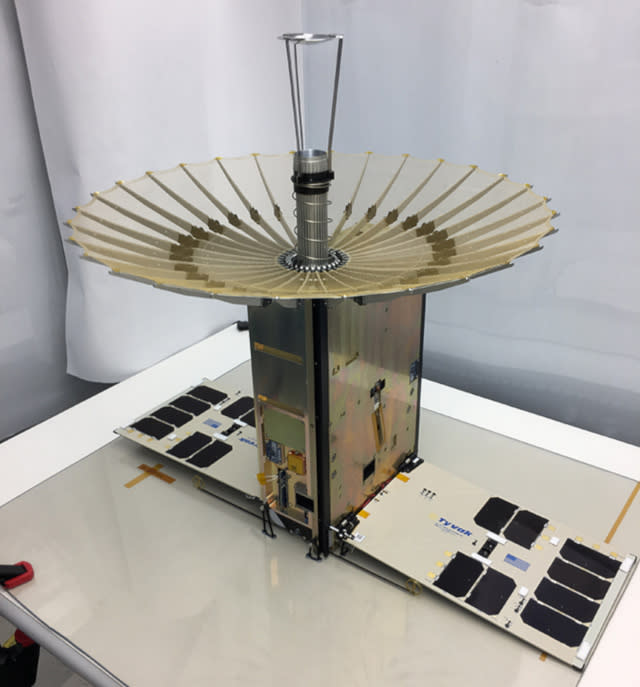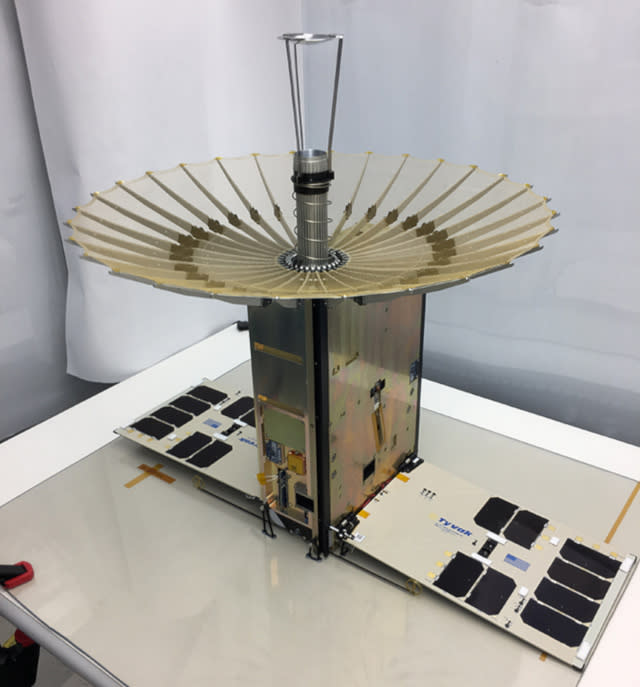NASA's pint-sized satellite could improve weather forecasts
A fleet of RainCubes could monitor storms and send back updates in real time.
Apparently, NASA has been testing a small, shoebox-sized satellite that could make weather forecasts a lot more accurate. It's called RainCube for "Radar in a CubeSat," and it uses tiny instruments to provide real-time look inside storms. The agency has deployed the test unit from the ISS into Low Earth Orbit in July, which captured its first images of a storm over Mexico in August. In September, the satellite also captured images of Hurricane Florence's first rainfall. In other words, the experiment has been successful, though most likely far from over. See, the hope is to use a whole fleet of RainCubes to monitor severe storms.

Graeme Stephens, director of the Center of Climate Sciences at NASA's Jet Propulsion Laboratory in Pasadena, California, explained:
"We don't have any way of measuring how water and air move in thunderstorms globally. We just don't have any information about that at all, yet it's so essential for predicting severe weather and even how rains will change in a future climate."
While small, the RainCube isn't so tiny that scientists can let loose a bunch inside a raging hurricane à la the sensors in Twister. It works by using radar to see storms in the same way a bat uses sonar to fly around in the dark. RainCube has an umbrella-like component that sends out chirps or radar signals, which then bounce off raindrops to paint a picture of what the inside of a storm looks like. The RainCube team created it as an experiment to see if it's possible to create a weather radar in the form of a tiny low-cost satellite.
"The radar signal penetrates the storm, and then the radar receives back an echo," Principal Investigator Eva Peral said. "As the radar signal goes deeper into the layers of the storm and measures the rain at those layers, we get a snapshot of the activity inside the storm."
In the future, multiple units could work together to monitor hurricanes/typhoons in real time and send back updates every few minutes. Scientists could then use the data they gather to enhance weather models, so we can improve our ability to predict the movement of rain, snow, sleet and hail and make more accurate weather forecasts.




